The 12MW Glenlee hydro-electric power station in Scotland is part of the 106.5MW Galloway Hydro-Electric power scheme, which was the first large scale integrated hydro-electricity supply complex in the UK when it was built and commissioned in the mid 1930s.
A 60km long network of lochs, dams, tunnels, aquaducts, pipelines and rivers interconnect six power stations in a cascade system, which reuses the water several times for power generation. Each station reuses the water that has been discharged by the one above to generate electricity.
A dam blocks the natural outflow of Loch Doon and acts as the main storage reservoir at the top of the scheme, which has a drop of 210m over its length.
Glenlee is the fifth of the six power stations in the interlinking renewable energy scheme that covers a large area of Galloway and South Ayrshire. Water for Glenlee Power Station gathers in Loch Clatteringshaws and flows through a 6km long tunnel to a portal control valve above the power station. From here water plunges 125m down the hillside through a 570m long steel penstock of varying diameter to the station’s twin 6MW turbines and out of tailrace valves and into a spillway, for discharge into the River Dee. From here the discharged water combines with natural river flows to the downstream Loch Ken, which acts as the reservoir for the last power station in the scheme at Tongland. Outflow from Tongland Power Station rejoins the lower reaches of the River Dee and flows into the Solway Firth at Kirkcudbright Bay.
The Glenlee penstock was in need of cleaning and repainting and power station operator Scottish Power Generation Ltd awarded a contract for its refurbishment to the specialist contractor Concrete Repairs Ltd based in Falkirk. The flange bolted steel pipeline had not been cleaned and painted internally for over 70 years, since it was installed in the 1930s. CRL believed the internal cleaning and paint removal could be done with high-pressure water jetting and contacted N.E.T. Waterjet Ltd, a contractor based in Meigle, Perthshire, specialising in ultra high pressure water technology and diamond drilling and sawing.
N.E.T.Waterjet Ltd’s managing director Tom Wallace believed it was initially feasible to use hand held high-pressure water jetting lances in the penstock’s varying diameters and gradients to remove the old paint coating and peat lying in the bottom, but there was a risk for the operators and so he looked at the possibility of adapting a robot, normally used for the hydrodemolition of concrete, and visited the Conjet factory in Sweden. As soon as he saw the compact 324 Robot he knew it would work, using the optional Hammelmann blast or rotor head instead of the normal concrete hydrodemolition lance.
N.E.T. used its new Conjet 324, with optional rotor head, which arrived on site in May 2010, to remove the build up of debris and old paint coating up to 4mm thick. The company had about 4,200m2 to clean from the inner surface of the penstock in diameters from top to bottom of 3m, 2.7m, 2.4m and twin 1.8m and on varying gradients from 1:100 up to the steepest 18 degrees.
CRL removed the flange bolted expansion joints and butterfly valves in the penstock to provide N.E.T. access at several points for the Conjet 324, which was supplied with water at a pressure of 2,500 bar and flow of 25 litres/min from one of N.E.T.’s existing 250kW Hammelmann 120 high-pressure pumps. “We worked a single shift seven days a week and averaged to clean about 200m2/shift, but our best was 320m2/shift,” said Mr Wallace. “The surface of the pipe actually gets cleaned twice as the 180mm diameter blast head is rotated full circle round the inner circumference of the pipe, then advanced 90mm by the Robot and then rotated back in the opposite direction.
“The sequence is repeated continuously. The Conjet Robot has been superb and worked very well and is a lot safer and about three times faster than using hand lancing. There is no fatigue for the operator and the Robot provides consistent speed and removal. It is also possible to quickly and easily change or adjust the blast head settings and forward step speed to suit the adhesion of the old paint coating.”
There was no dust from the paint removal and the waste water and debris from the Conjet Robot cleaning process flowed down the penstock and was collected by CRL in a sump in the turbine house. It was then pumped into tankers for off site environmental treatment and disposal.
(GK)
Construction News
25/10/2010
N.E.T. Waterjet Uses Conjet Robot At Power Station
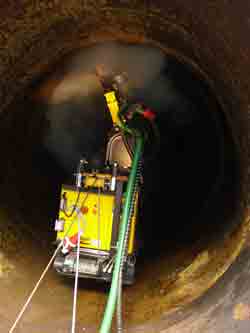
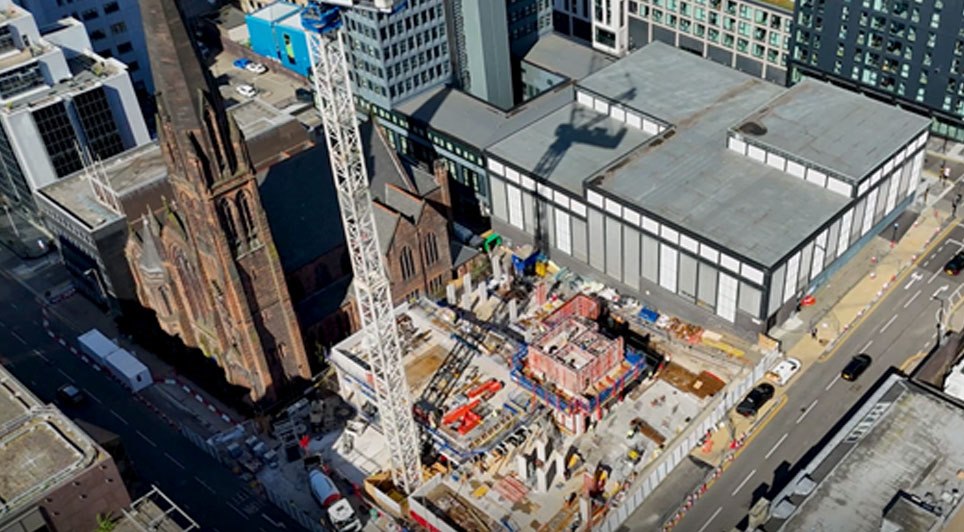
15/04/2025
Construction of a £70 million student accommodation development at 292-298 St Vincent Street in Glasgow has reached a significant milestone, with the building now visibly rising from the ground.
Drone footage has captured the progress of the project, which is a partnership between developer Artisa
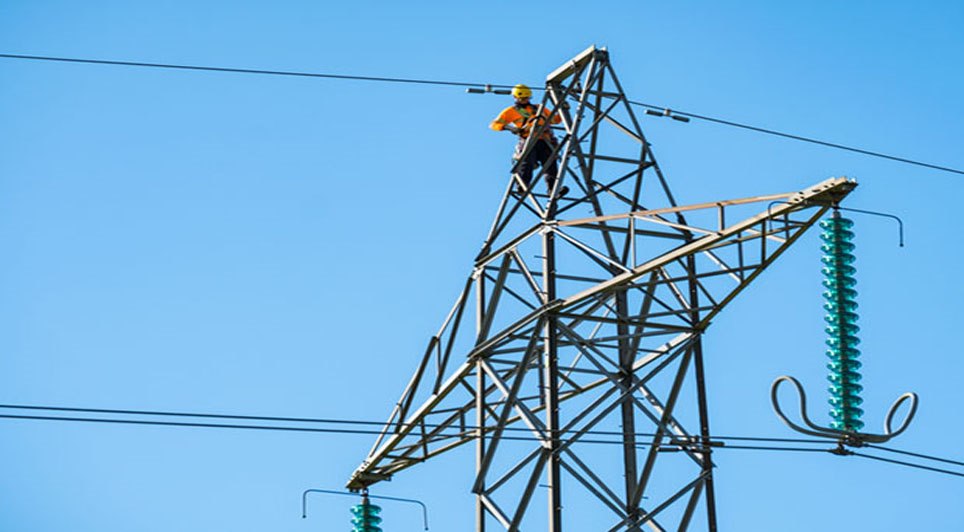
15/04/2025
Energy regulator Ofgem is expected to confirm today (April 15) its finalised Connections Reform process, designed to expedite grid connections for renewable energy projects that are ready and crucial for achieving the UK's clean power targets for 2030 and beyond.
The new connections system, anticip

15/04/2025
The ambitious transformation of Glasgow’s landmark George Square has moved into a tangible phase with the commencement of the erection of hoardings around the perimeter of the civic space. Starting today, the hoardings will enclose the Square for the duration of its 18-month redevelopment.
The pane

15/04/2025
Members of the public are invited to attend a consultation feedback event to discuss the proposed infrastructure associated with a new underground electricity transmission cable between the Kinardochy and Errochty substations in Perthshire.
The event will take place on Monday, 28 April, from 4 pm t
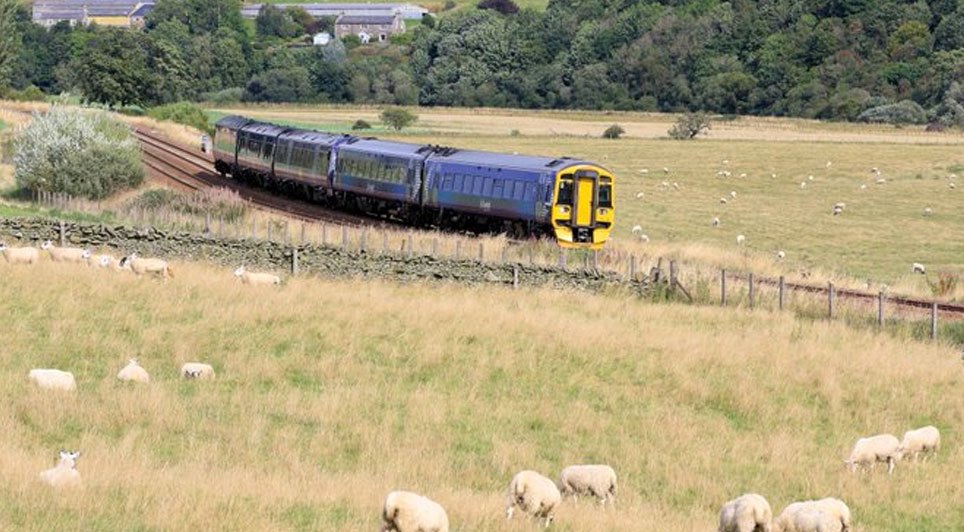
15/04/2025
Turner & Townsend have been appointed as project managers to develop a business case for the potential extension of the Borders Railway beyond its current terminus at Tweedbank to Hawick and Carlisle.
This key appointment will enable crucial work to progress on the project, including feasibility s

15/04/2025
Arran Community Renewables, a Community Benefit Society based on the Isle of Arran, has secured planning consent for a 6 MW solar farm. The Glenkiln Solar Farm, located approximately 1km west of Lamlash, is projected to generate 5,600MWh of clean renewable energy annually from 2027.
The £5 million
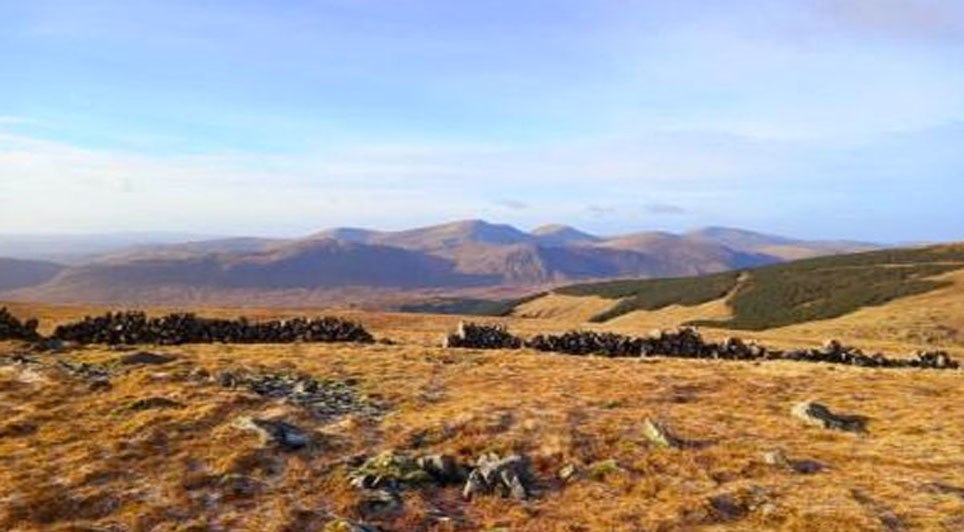
15/04/2025
A new Route Map has been published by the Scottish Land Commission (SLC) to ensure communities across Scotland secure tangible and long-lasting benefits from nature restoration projects and investment in the country's natural environment.
The practical guide is designed for landowners, developers,

15/04/2025
Award-winning principal contractor Procast Group has further expanded its presence across Scotland with the opening of a new base in Dumfries. The Hamilton-based firm has invested £30,000 in a new warehouse and office facility in the Maxwelltown Industrial Estate in Dumfries and Galloway, marking it

14/04/2025
Glasgow City Council's Affordable Housing Supply Programme (AHSP) facilitated the completion of over 1,000 new affordable homes in the city during the past year, despite facing budgetary reductions at the start of the financial year.
The initial grant of £78.687 million from the Scottish Government

14/04/2025
A key phase of Scottish Water's £11.5 million project to upgrade a strategic rising sewer main connecting Renfrew and Glasgow is set to begin, resulting in a significant road closure.
From Monday, 28 April 2025, Ferry Road in Renfrew will be closed to all vehicular traffic for a period of four mont
 Scotland
Scotland UK
UK Ireland
Ireland London
London











